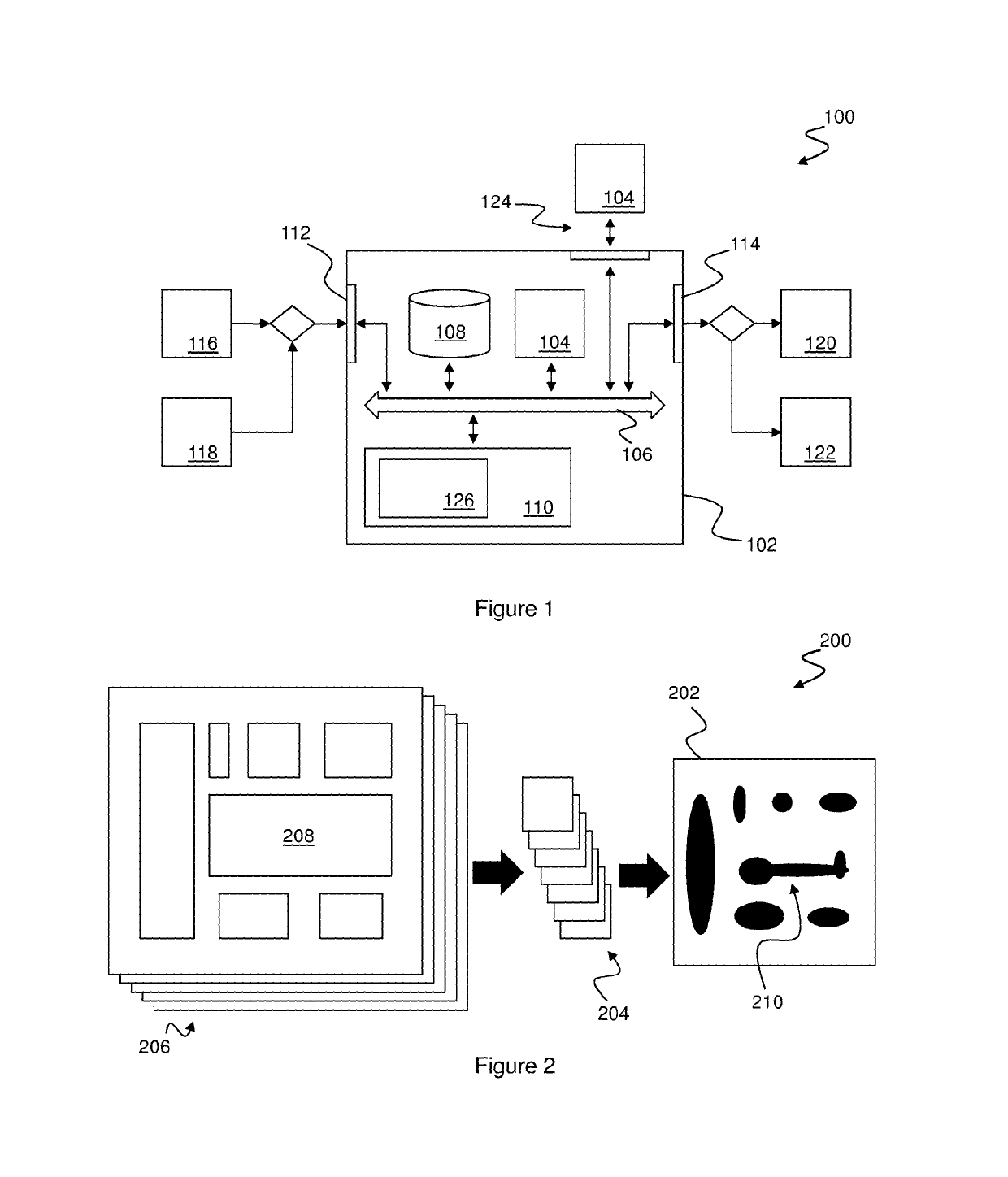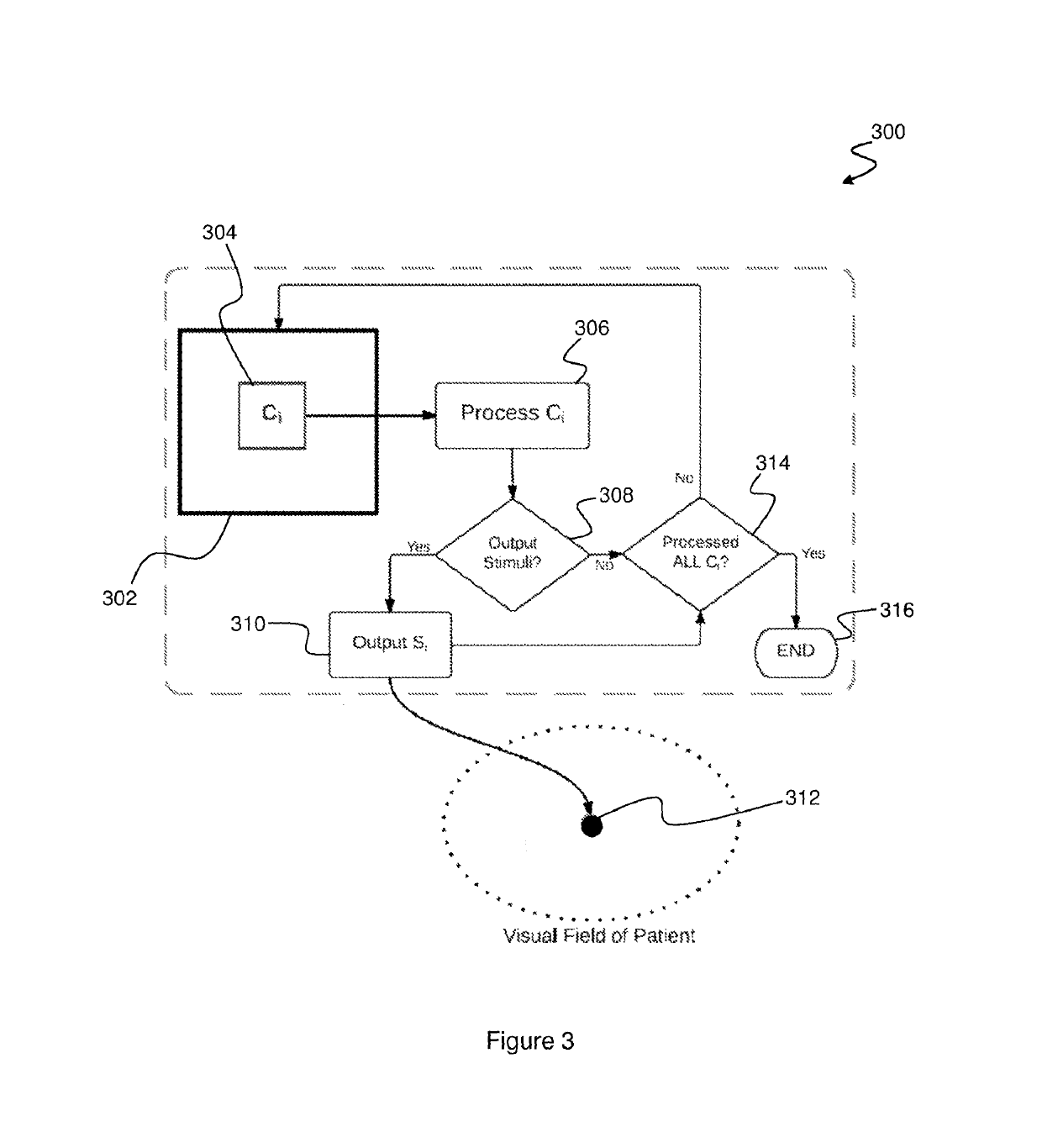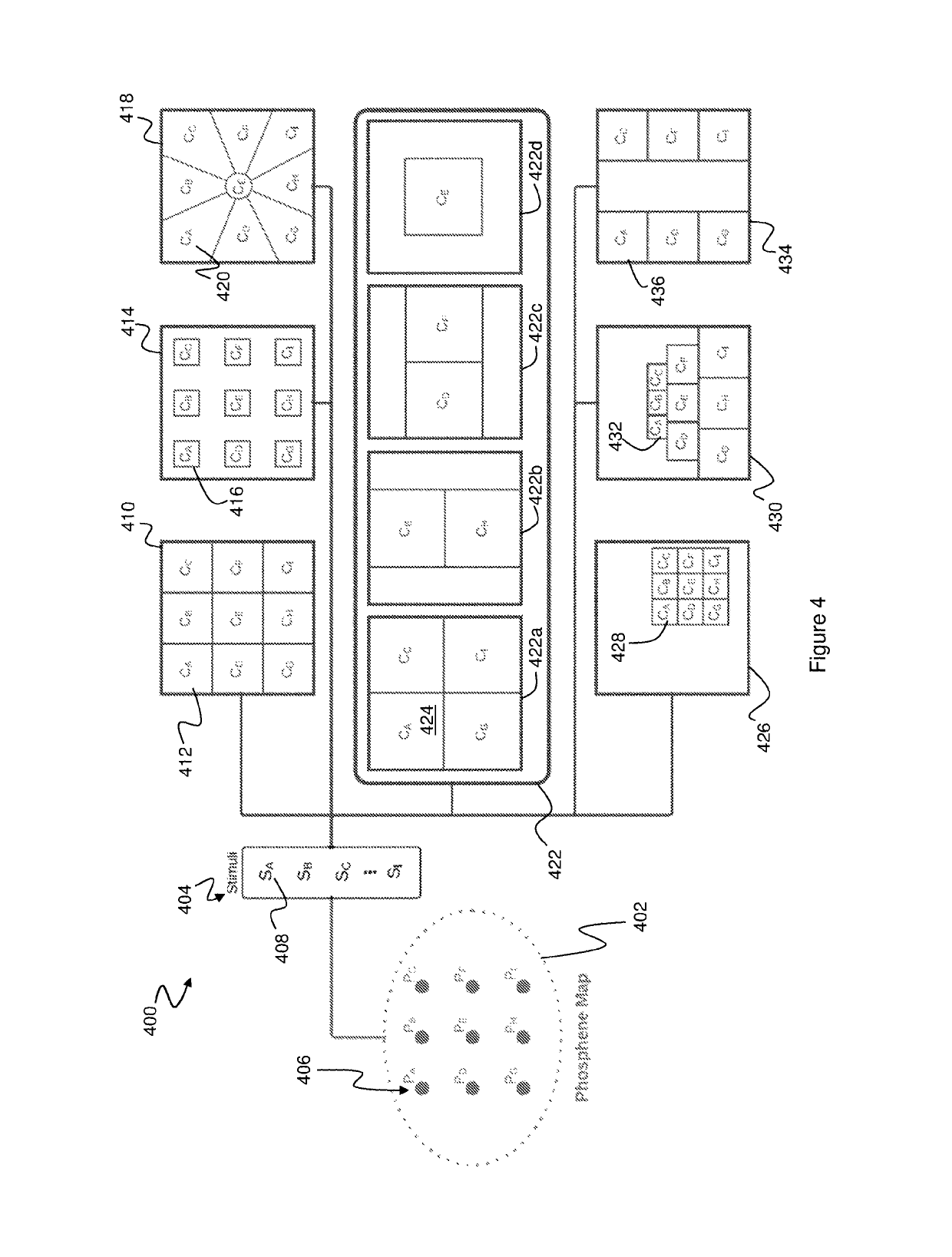Image processing method and system for irregular output patterns
a processing method and output pattern technology, applied in the field of visual image processing, can solve the problems of poor dynamic range, limited spatial resolution of phosphene patterns, irregularities of patient's phosphene maps, etc., and achieve the effect of improving correlation
- Summary
- Abstract
- Description
- Claims
- Application Information
AI Technical Summary
Benefits of technology
Problems solved by technology
Method used
Image
Examples
Embodiment Construction
[0075]FIG. 1 is a block diagram of a visual image processing system 100 embodying the invention. The system 100 comprises a processing unit 102, which may be a portable or wearable device carried by a patient as part of a prosthetic vision system.
[0076]The processing unit 102 includes a microprocessor 104, which is operatively associated, in use, via an address and data bus 106 with non-volatile memory 108 and volatile memory 110. In a portable device, the non-volatile memory 108 may be Read Only Memory (ROM), flash memory, or the like. If a lower level of portability is required, the non-volatile memory 108 may include a magnetic medium, such as a hard-disk drive. The volatile memory 110 is typically Random Access Memory (RAM), or similar.
[0077]The microprocessor 104 is further associated with at least one sensor input interface 112, and an output interface 114 for generation of stimuli.
[0078]Information provided to the sensor input 112 may be generated from one or more sensors 116...
PUM
 Login to View More
Login to View More Abstract
Description
Claims
Application Information
 Login to View More
Login to View More - R&D
- Intellectual Property
- Life Sciences
- Materials
- Tech Scout
- Unparalleled Data Quality
- Higher Quality Content
- 60% Fewer Hallucinations
Browse by: Latest US Patents, China's latest patents, Technical Efficacy Thesaurus, Application Domain, Technology Topic, Popular Technical Reports.
© 2025 PatSnap. All rights reserved.Legal|Privacy policy|Modern Slavery Act Transparency Statement|Sitemap|About US| Contact US: help@patsnap.com



